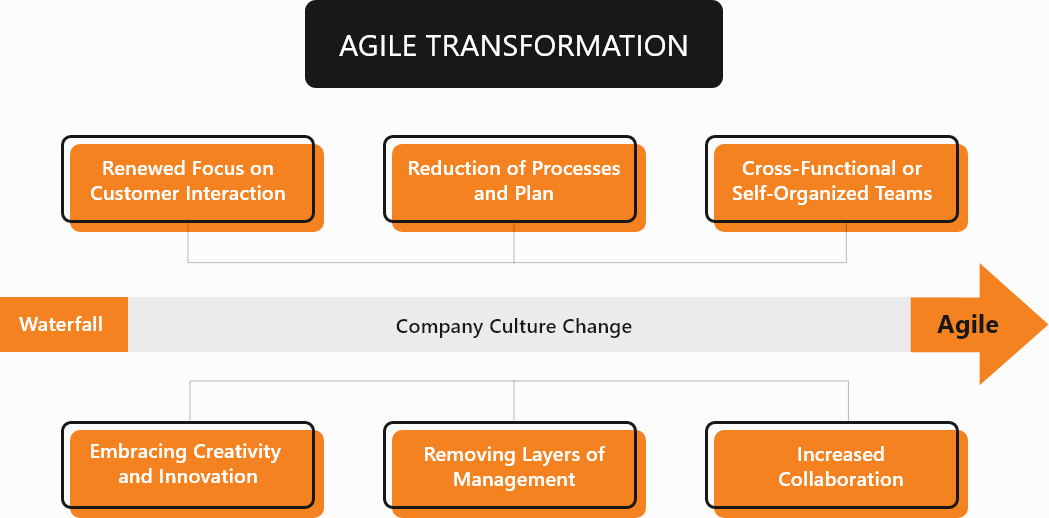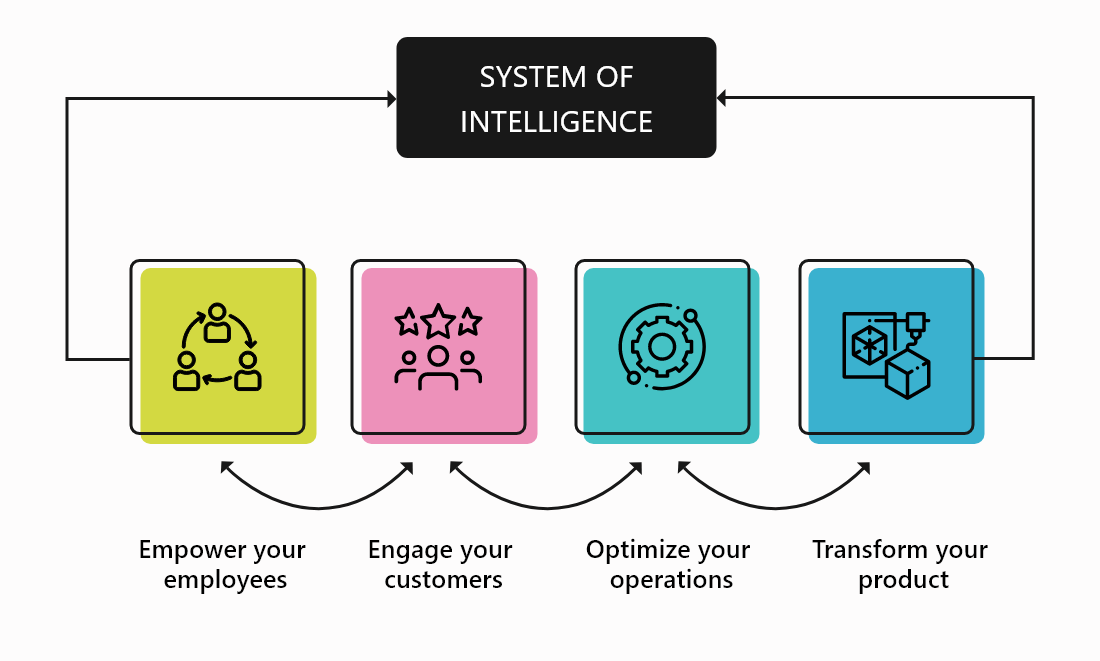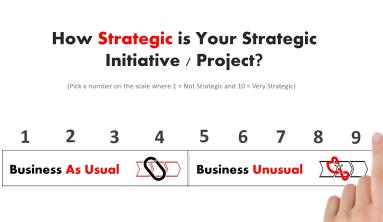Introduction
In today’s competitive digital era, where a Fortune 500 company’s life expectancy has declined from around 70 years- just half a century ago to less than ten years, it is becoming necessary for every organization to undergo a business transformation to continue to compete effectively.
Before adopting a business transformation for your organization, you must know the difference between the agile and digital transformation. If you are aware of it, then only you can choose the type of transformation that can operate your business and unlock new opportunities to deliver new efficiencies.
Agile transformation is typically based on confirmation that successful digital transformation occurs through continuous innovation by thoroughly changing business models.
What is an Agile Transformation?
An agile transformation is an act of transforming an entire organization into an elegant and thrive in a collaborative, flexible, self-organizing, and fast-changing environment based on Agile principles.

Agile principles can be taught throughout any organization to develop teams to benefit from the rewards of healthy agility. The organizational mindset should change and embrace a culture of self-organization and collaboration.
Agile transformation allows organizations to be reactive and better serve their clients’ interests with less effort, which requires significant support and resources to stick it out when things get bumpy.
What is Digital Transformation?
Digital Transformation is an act of digital technology that transforms business through manual processes with digital processes to create modified existing business processes and customer experience to meet market requirements. It replaces older digital technology to a newer digital technology called Digital transformation.

Digital solutions may allow you to add efficiencies via automation rather than merely supporting traditional digital methods. It is a foundational change in the organization that delivers value to its clients.
From paper to spreadsheets and typewriters to computers, we have the chance to reimagine how we engage our clients–how we do business–with digital technology on our side.
The Difference Between Agile Transformation and Digital Transformation
Agile refers to project management for software development, which is used for Scrum or other framework types. It is a set of principles listed in the Agile Manifesto established in 2001. Digital transformation changes the business performance into Business Transformation by radically changing the processes and business models. But if you are not aware of how Agile transformation is different from Digital transformation, then it will be difficult for you to choose the correct transformation for your business.
So, here are a few transformations differences that you must be aware of:
Clarity of Concepts
Agile Transformation
An Agile transformation intends to deliver functions across the entire organization to adopt the ideal blend of lean principles by fostering engagement and collaboration.
Scrum is one of the essential components of agile software development methodology, a robust framework that delivers value to the business.
Digital Transformation
Digital transformation is a customer-oriented process that focuses on business by making technology a fundamental part of it. It is beneficial if you have basic knowledge of modern clients’ which needs to rethink the business model with a strategic digital mindset.
Technology is the vital component of digital transformation methodology that leverages emerging technologies and completes a successful digital transformation.
Evalutaion of ROI (Return Oxn Investment)
Agile Transformation
When you’re measuring the ROI of agile transformation, you should focus on the implementation of results rather than expectations, which remain mostly on operational protocols and not on value delivery.
To maintain the accuracy of ROI, calculate the benefits of agile using the metrics given below at the end and beginning of the transformation.
- Cycle time: Time is taken to turn a requirement into the delivered business product.
- Development cycle: it is calculated from identifying the transformation to its final solution and to which extent it is shortened since the transition to Agile methodology.
- Agile Maturity: It is the number of sprints gained to deliver the software product.
- Business value: It is the number of business value teams that resulted from the sprints.
- Customer: Agile maturity will positively impact the customer with improved speed to market and value delivery.
Digital Transformation
More than 60% of transformation leaders can justify the value of digital transformation via ROI as it is a very challenging and tricky business.
When your organization undertakes a digital transformation, it goes beyond the business boundaries towards how an organization goes to market and communicates with customers. Organizations having digital transformation receive a 17% return on ROI over the next year.
Agile Transformation Vs. Digital Transformation: Benefits
Agile Transformation
Over the past few years, more than 50% of senior executives mentioned Leadership Mandate, which led to an increase in their organization’s level of agility. It shows that the agile transformation model is executed in a top-down manner and works best if imposed in a bottom-up approach.
If agile transformation is implemented correctly, it can bring tremendous benefits such as:
- Protection against the errors generated during project implementation because of efficient collaboration between testing and development teams.
- Great communication and engagement
- Cost control and risk reduction
- Shorter time to market and flexibility in product delivery.
- Ability to immerse change without disrupting the development process.
- Complete transparency
- Healthy organizational culture with more self-reliant employees.
Digital Transformation
Achieving a successful digital transformation is not easy. If your organization is investing in the right technologies, then you can deliver customer outcomes and make the transformation worth the effort.
Some benefits of Digital Transformation include:
- End to end hassle-free user experience.
- Greater resource management
- Opening the door to globalization
- Automated workflow processes that boost the organization’s efficiency.
- Digitalization of business operations
- Innovative services and new products for the growth of new and existing market opportunities.
Final Thoughts
It is inconsequential which business transformation you’re going to adopt for your business as it focuses on how your business enhances its value today and in the future. A perfect transformation business model embraces the right blend of both agile and digital transformation.
Agile digital transformation is based on proof that successful digital transformation occurs through continuous innovation and the capability to measure steps. Business transformation empowers the organization to launch and learn about the latest digital initiatives and customer needs.
Again, thoroughly understand your business requirements and choose the correct business transformation model that leads to success.
Chandresh Patel
Via customerthink.com





![[INFOGRAPHIC] The 12 Agile Principles](/sites/default/files/styles/style_383_222/public/2022-09/2022-09-22_22-29-58.png?itok=VVRsgf2U)